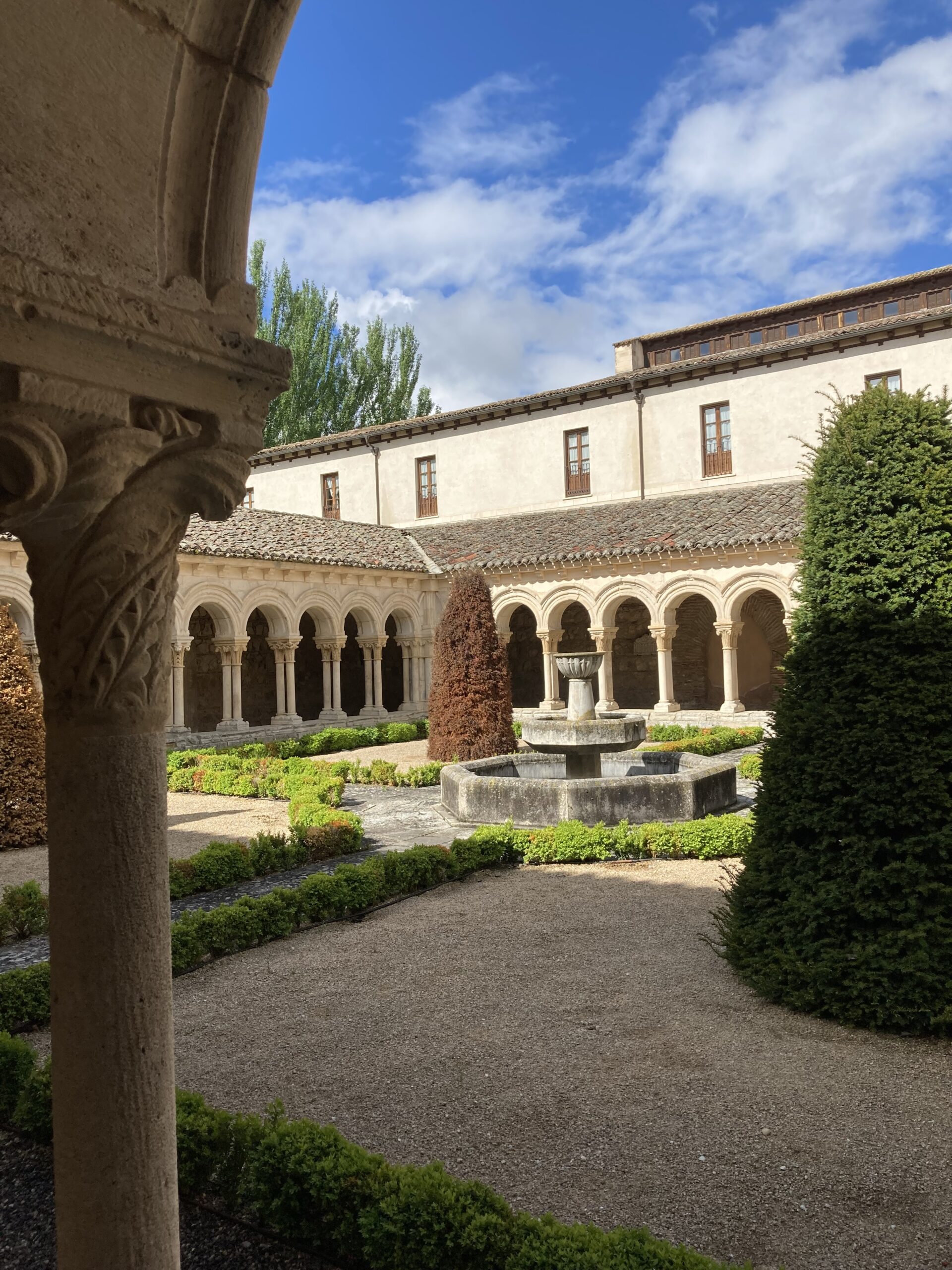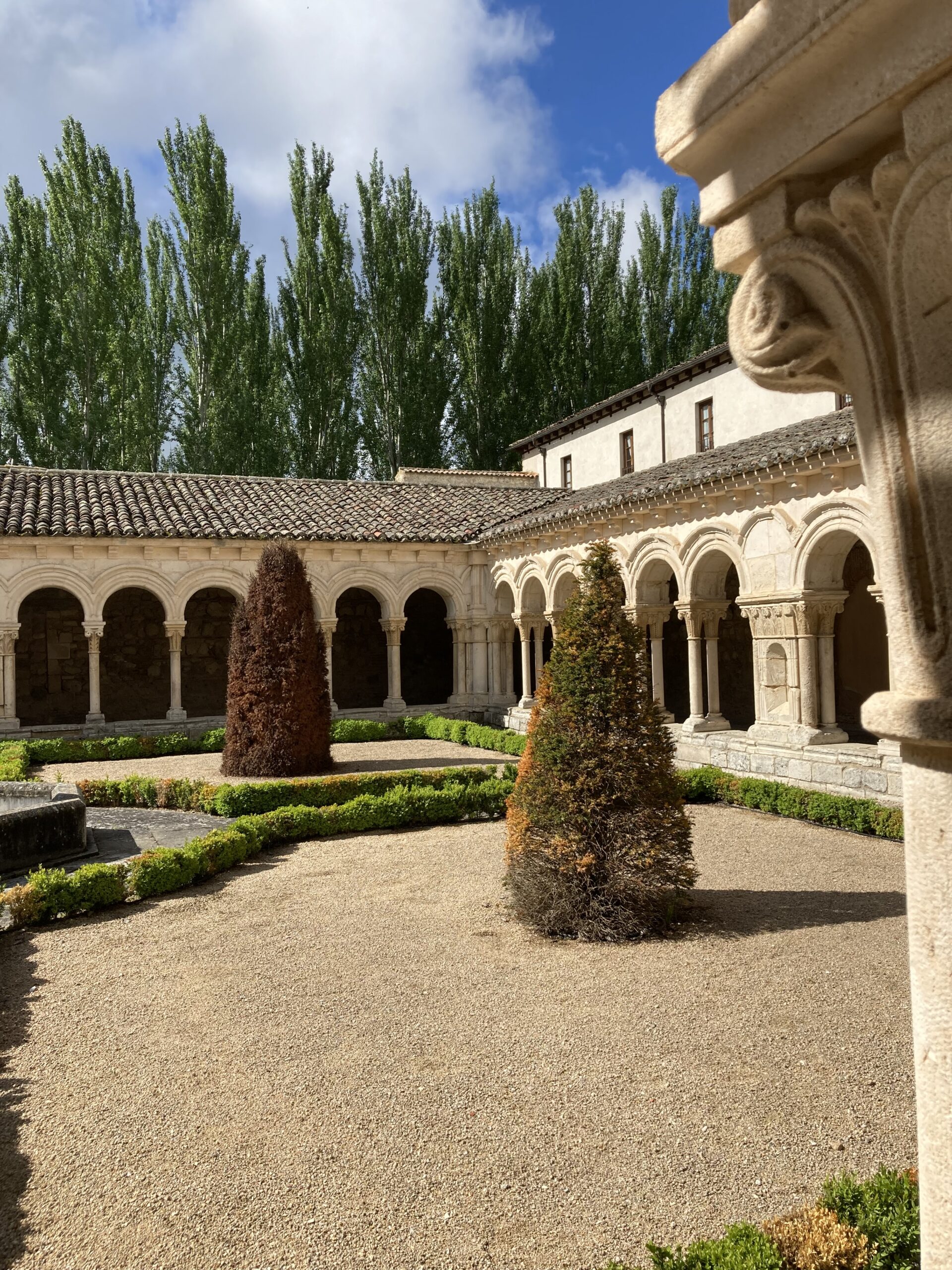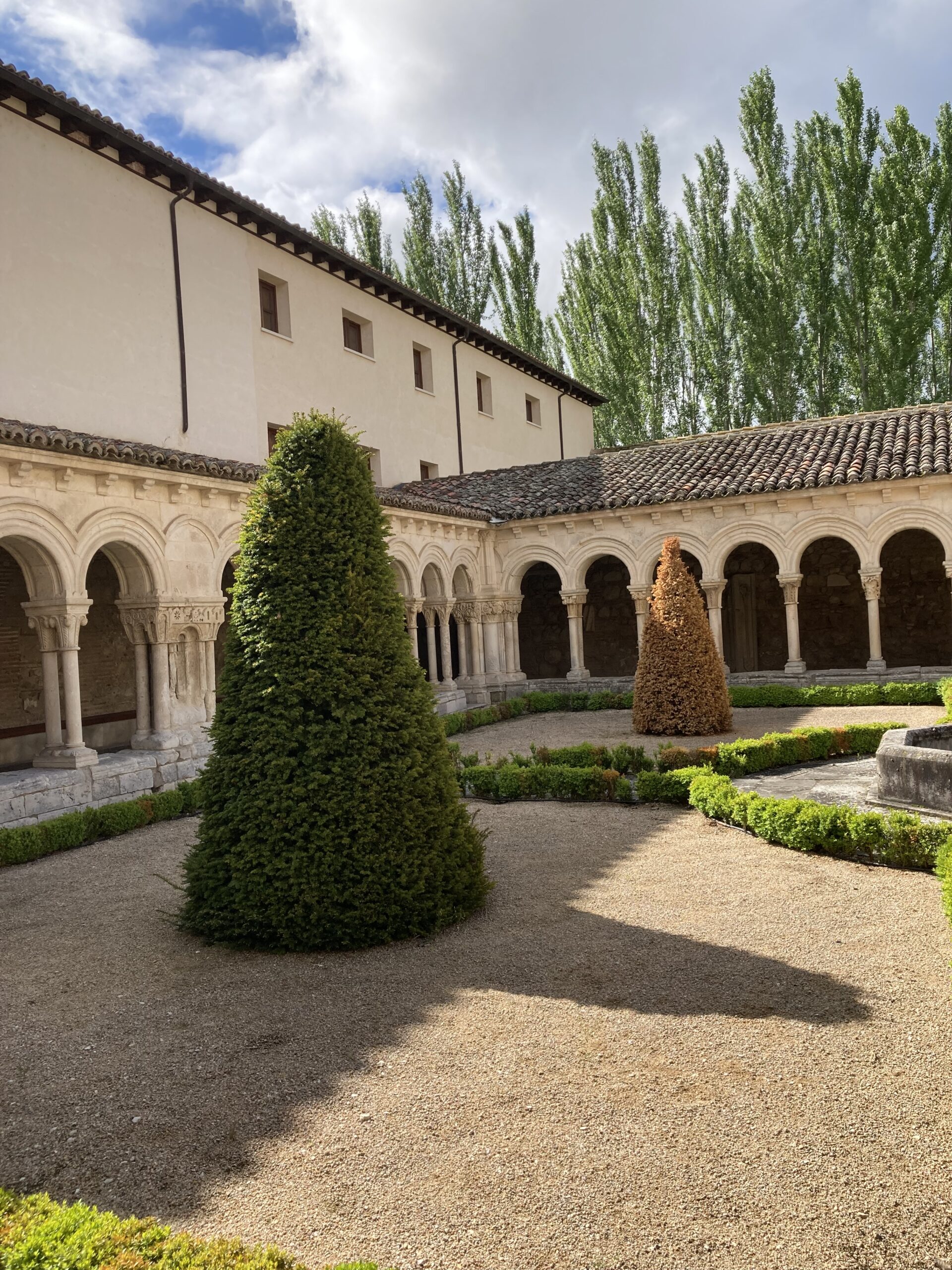
I love cloisters’ peace / soft words of silence within / harmony and calm… This is exactly how I felt in the Cloister of the Monastery of Santa María la Real de las Huelgas, in Burgos, Spain.
The Monastery of Santa María la Real de las Huelgas in Burgos, Spain, was founded in 1187 by King Alfonso VIII of Castile and his wife Queen Eleanor of England. Originally established as a royal Pantheon and Cistercian convent, the monastery played a significant role in Spanish religious and political life throughout the Middle Ages. It served as a spiritual and cultural center, with close ties to the Castilian monarchy. The monastery’s royal patronage allowed it to amass considerable wealth and influence, making it one of the most important monastic institutions in medieval Spain. Over the centuries, it has witnessed numerous historical events, including royal ceremonies and the burial of several Castilian monarchs. https://www.patrimonionacional.es/visita/monasterio-de-sta-maria-la-real-de-las-huelgas
An essential stop on the Camino de Santiago, the Monastery holds the distinction of being the premier female Cistercian monastery in Spain and serves as the head of all Cistercian Convents within the Crown of Castile. The first abbess of Las Huelgas was a testament to the wealth and privileges bestowed upon the monastery; she wielded ecclesiastical, civil, and criminal authority over more than 50 nearby towns, answering only to the pope. Her high rank was symbolized by a unique headdress similar to a mitre, and she carried a crosier, reflecting a status akin to that of a female bishop.

The Monastery showcases a fascinating blend of architectural styles. The original construction included a Mudejar church, part of which is still preserved in the current Chapel of the Assumption, characterized by its Almohad style. This early structure contrasts with the later Romanesque elements, particularly visible in the arches and columns adorned with plant motifs and castle designs. In the early 13th century, the definitive Gothic monastery was constructed, embodying the austere architectural style of the Cistercian order. This phase included the large church with reinforced walls and various rooms, among which the chapter house stands out for its significance and design.
Santa María la Real de las Huelgas is famous for its Romanesque Cloister known as las Claustrillas. Architecturally, the Cloister consists of 12 arches on each side supported by double columns, with capitals decorated with plant and castle motifs. Serving as the heart of monastic life, Cloisters were designed as a serene and contemplative space, often enclosing a garden or courtyard. They provided a sheltered pathway for monks to move between the different parts of the monastery while maintaining a meditative atmosphere conducive to prayer and reflection. The architectural significance of Cloisters lies in their ability to blend functionality with spiritual symbolism, representing the monastic ideals of seclusion and introspection. The Cloister at Las Huelgas, with its intricate arches and harmonious proportions, is a testament to the importance of these spaces in fostering the religious and communal life of the monastery. https://www.monasteriodelashuelgas.org/

The Cloister of the Monastery, constructed in the 13th century, is a remarkable example of Romanesque architecture infused with Cistercian austerity. Its history is intertwined with the monastery’s development as a Royal Pantheon and spiritual center. The Cloister features a series of arches supported by slender columns, creating a rhythmic and harmonious passageway around a tranquil courtyard. The simplicity of the design reflects the Cistercian emphasis on modesty and contemplation, while the delicate tracery and occasional ornamental details showcase the Romanesque influence. Over the centuries, the Cloister of Santa María la Real de las Huelgas has been a silent witness to the daily rituals of the nuns, royal ceremonies, and the ebb and flow of historical events, making it a significant architectural and historical element of the monastery.
For a Student Activity, please… Check HERE!